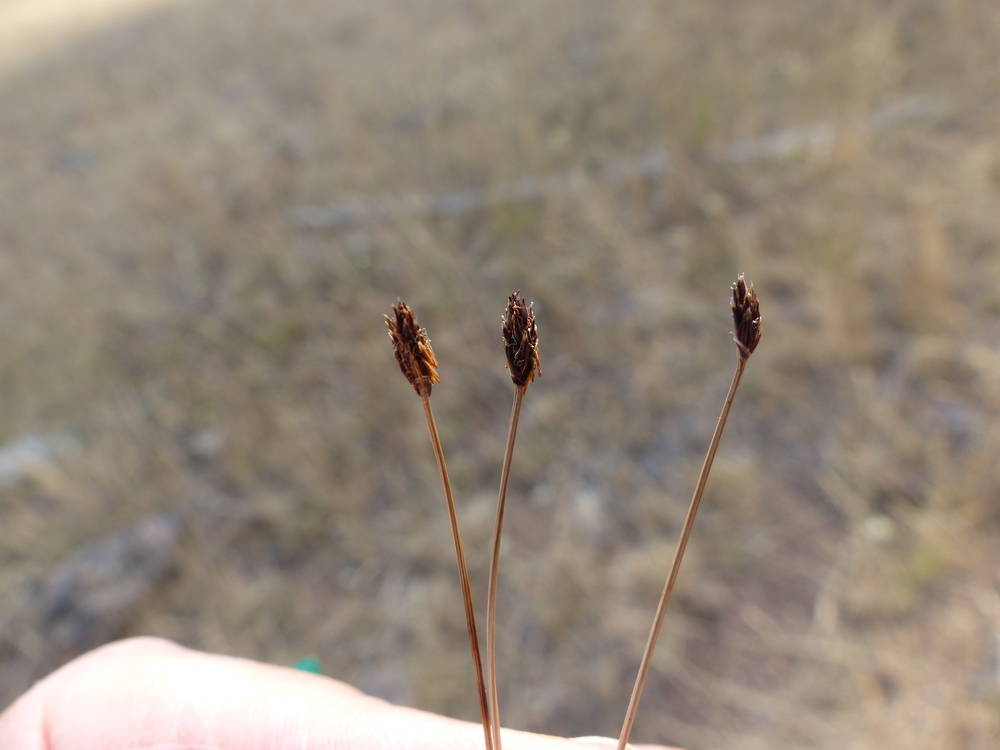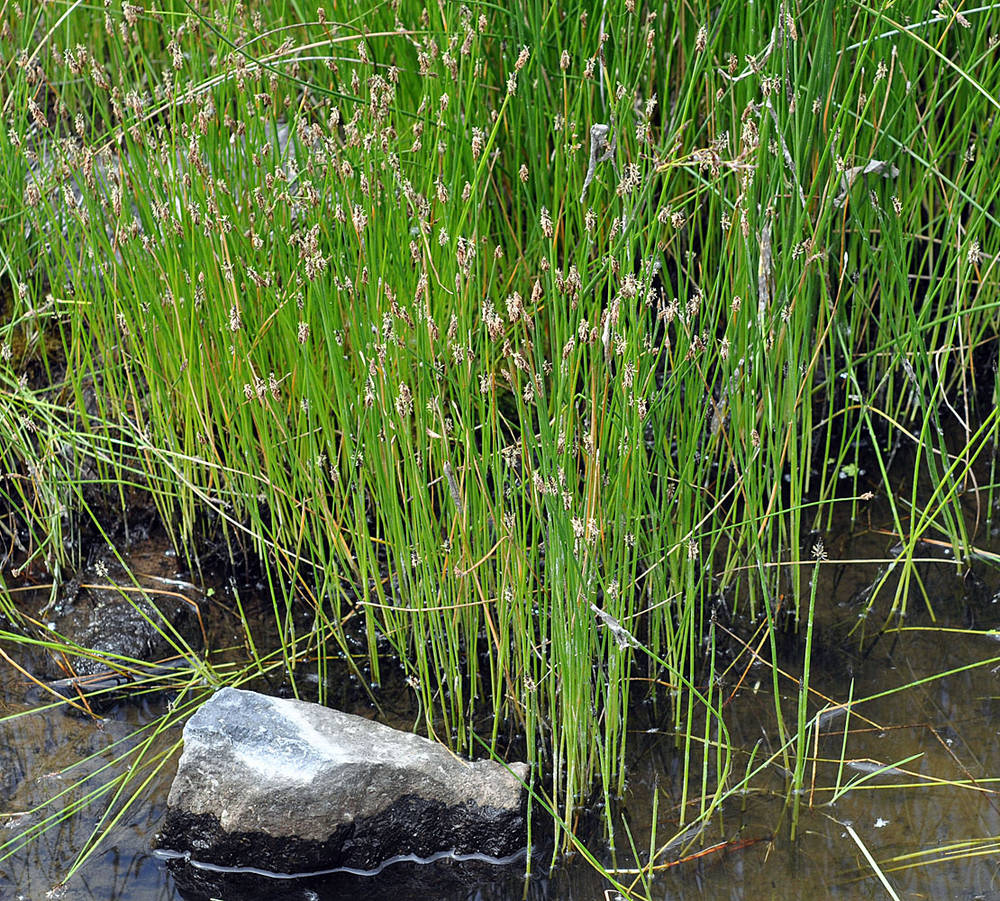Eleocharis bolanderi
Eleocharis palustris
Bolander's spikerush
common spikerush, creeping spikerush, marsh spikerush
subterete, 10–30 cm × 0.3–0.5 mm.
terete or slightly compressed, 30–115 cm × 0.5–5 mm.
ovoid, 3–8 × 2–3 mm;
proximal scale clasping; entire, subproximal scale with flower; floral scales 8–30, 4–5 per mm of rachilla, 2–3 × 1.5 mm;
apex entire; acute, often keeled in distal part of spike.
ovoid to lanceoloid, 5–25 × 3–7 mm;
proximal scale clasping 67(75)% of culm, subproximal scales 1–2; empty; floral scales 30–100, 4–8 per mm of rachilla, 3–5 × 1.5–2.5 mm;
apex entire; acute or subacute, often keeled in distal part of spike.
perianth bristles 3–6, often unequal; from rudimentary to 50% of achene length;
anthers 0.9–1.4 mm;
stigmas 3.
perianth bristles 4(5), sometimes absent; much shorter than achene to equaling tubercle, rarely to 2 times as long as achene;
anthers 1.5–2.2 mm;
stigmas 2; very rarely some 3.
slightly to greatly compressed-trigonous, rarely thickly lenticular, 0.9–1.2 × 0.65–0.8 mm.
biconvex, 1.1–2 × 1–1.5 mm.
persistent, not splitting;
apex obtuse, rarely hardened, lacking a tooth.
persistent or sometimes disintegrating, often splitting adaxially;
apex lacking tooth.
flat to shallowly pyramidal; lower than wide, 0.1–0.3 × 0.4–0.65 mm.
pyramidal to mammillate; as high as wide to 2 times higher, 0.3–0.7 × 0.35–0.7 mm.
=16, 27, 36.
Eleocharis bolanderi
Eleocharis palustris
Shallow, rocky, ephemeral streams. 1100–2100 m. BR, BW, Owy. CA, NV, ID; east to CO. Native.
Eleocharis bolanderi is easily recognized in summer when it forms masses of dry, brown, dormant and apparently dead culms in dry stream beds. It is easily pulled up to expose its cespitose habit. The virtually flat tubercles are particularly distinctive.
Freshwater marshes, lake shores, streamsides, and ponds. 0–2300 m. All ecoregions except Col. CA, ID, NV, WA; north to AK, east to Newfoundland, south to Mexico; Eurasia, New Zealand. Native.
Eleocharis palustris is the most common species in a taxonomically difficult, circumboreal complex of the genus. Its pure, rhizomatous stands can dominate plant communities in shallow wetlands. It can usually be recognized by its subequal proximal and subproximal scales, both lacking flowers. Culm widths overlap those of E. macrostachya, but the very widest spikerush culms in Oregon belong to E. palustris.
Barbara Wilson, Richard Brainerd, Nick Otting
Barbara Wilson, Richard Brainerd, Nick Otting
- Local floras:
CA,
OR,
WA
- Local Web sites:
CalFlora,
CalPhotos,
Flora NW,
PNW Herbaria
WildflowerSearch
iNaturalist (observations)
USDA Plants Database
- LBJ Wildflower Center
- SEINet
- Plants of the World Online
- Encyclopedia of Life
- Wikipedia
- Google Image Search
- Local floras:
BC,
CA,
OR,
WA
- Local Web sites:
CalFlora,
CalPhotos,
Flora NW,
PNW Herbaria
WildflowerSearch
iNaturalist (observations)
USDA Plants Database
- LBJ Wildflower Center
- SEINet
- Plants of the World Online
- Encyclopedia of Life
- Wikipedia
- Google Image Search





